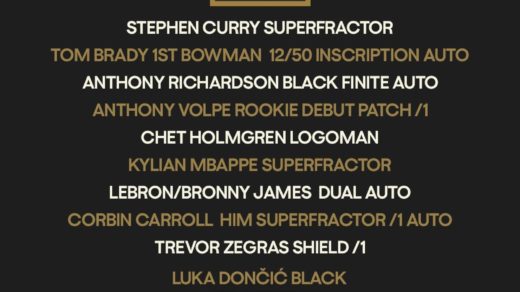In a stunning saga that might have been ripped from the pages of a noir thriller, Anthony J. Tremayne orchestrated a masterful con, weaving a web of deceit that ensnared the trusting souls of the sports memorabilia world. This community, built on the sacred covenant of trust, found itself betrayed by one of its own. For nearly ten years, Tremayne transformed his cunning into currency, pocketing a staggering $250,000 from the pockets of enthusiasts yearning for a piece of sports history.
Based in the Golden State, Tremayne was no petty charlatan simply scribbling fake autographs on baseballs. No, his repertoire was much more diverse and insidious. From elegant Hall of Fame jackets to gleaming replica Stanley Cups, Tremayne’s offerings could seduce even the most skeptical of collectors. Each item came complete with certificates of authenticity—impeccably forged, mimicking the logos and formats of established third-party authenticators—and listings engineered to beguile the senses. These were not the laughable fakes one might stumble upon in a nefarious back alley; these relics seemed to emerge from the hallowed halls of glory themselves.
Investigators peered into this Pandora’s box and estimated the losses around a quarter-million dollars—a figure they feared could double if it continued unchecked. But like all great tales of crime and deception, the operation would not remain hidden forever. In a move worthy of the best undercover sting operations, an FBI agent took on the disguise of a humble collector. In 2019, he orchestrated the purchase of a photo allegedly adorned by autographs from the stars of “Keeping Up with the Kardashians,” a venture that cost a mere $200 but was invaluable as a keystone in the investigation.
The weight of potential charges stacked against Tremayne was formidable, but he ultimately chose to plead guilty to a singular, sweeping count of mail fraud. Though this closed one chapter of the saga, another loomed ominously on the horizon: sentencing, slated for August 2025. As the gavel descends, he faces the chilling possibility of up to 20 years removed from freedom—a hefty price for his crimes against the community of dreamers and believers.
For those who dwell in the sepia-toned nostalgia of collectible treasures, this scandal reverberates beyond the loss of currency. The community has received a sharp, sobering jolt. The burgeoning market for these artifacts—propelled by passion, often at the expense of reason—has become an enticing playground for the unscrupulous. Advanced forgeries, fraudulent certificates, and polished websites have made it increasingly difficult to distinguish truth from illusion. Here lies the cautionary tale: enthusiasm, it seems, can sometimes cloak a grinning specter of scam in its spellbinding, joyful embrace.
So where do collectors proceed from here? Vigilance, now more than ever, remains the hard and fast rule. Reliable dealers, those with a trusted reputation and a storied history of integrity, should become the go-to guardians of your next prized possession. Insisting on top-tier third-party verification from establishments with stalwart credibility isn’t just wise—it’s imperative. And when faced with that seemingly perfect item, lingering doubts aren’t a nuisance; they’re lifelines.
While Tremayne’s scheme has been dismantled, history whispers a cautionary truth: impostors will tirelessly attempt to step in. Scams like these cut deeper than wallets—they erode the enthusiasm, trust, and joy that fuel this vibrant tapestry of collective fervor. As collectors press on, armed with lessons and foresight, they tread softly, their fingers perhaps a bit slower on the trigger. But their hearts? They beat with the same unwavering passion for the stories behind every genuine signature and stitch.




